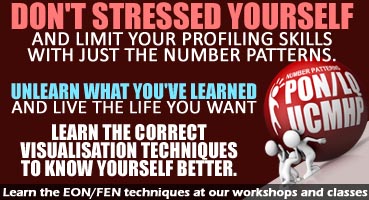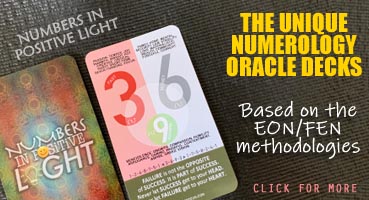Difficult People to Work With
“I have been following your articles and have learnt much from them. My heartfelt thanks for your wise words and sharing of insights. I would like your help to understand a character with these numbers,” Michelle wrote in her email to me, “The reason is because I discovered it has not been easy working with people with these numbers. Your analysis may shed some light.”
At work, we’re often faced with people of different culture, core values, working attitude and experiences. There are various reasons behind a person’s work attitude, including the influences from their family, health, and social issues. Some people enjoyed playing office politicking. Others could felt frustrated over biased favouritism with their boss on colleagues. Occasionally people may think others are at fault whenever they find someone difficult to work with.
It takes “two hands to clap” and two mindsets with one common direction to work cohesively. Unless we understand these people well, work conflicts could happen any time. We have to change our perspectives and attitude before we expect others to change theirs. We can be “difficult people” to work with if we chose to, and sometimes our mood swings and frequent distractions may make us a temperamental person no one likes to work with. Toleration and understanding other people’s traits and personalities (like using the EON methods) are essential to better working relationships.
In today’s article, I’ll focus on certain key areas in the birth chart based on my observations. You may want to check out my book “Elements of Numbers: Fast and Easy Character Profiling” and try to associate the basic traits present in Jane’s Birth and Personal Year charts. Meanwhile, let’s look at Jane’s EON chart and see if we can gather some signs that may suggest a person who has the “difficult-to-work-with” traits.
 At a glance, the tendency signs suggest a person who likes to take charge and plan quickly without hesitation. There are uneasy, conflicting views on Jane because of her somewhat isolated and temperamental behaviours. Some may perceive Jane as overbearing, difficult to work because of her “self-centric” attitude, assumed “hidden motives” or fear of intimidation that they may lose out in the work race. Jane’s focused mindset, social habits, and attitude may create unwanted attention as colleagues may see her as a threat to their career goals. Once people understands Jane better and learned to be more tolerant of her faults, they should find her a good working partner.
At a glance, the tendency signs suggest a person who likes to take charge and plan quickly without hesitation. There are uneasy, conflicting views on Jane because of her somewhat isolated and temperamental behaviours. Some may perceive Jane as overbearing, difficult to work because of her “self-centric” attitude, assumed “hidden motives” or fear of intimidation that they may lose out in the work race. Jane’s focused mindset, social habits, and attitude may create unwanted attention as colleagues may see her as a threat to their career goals. Once people understands Jane better and learned to be more tolerant of her faults, they should find her a good working partner.
The 7-5-3 patterns suggest the importance for Jane to read and understand policies, and not hastily assume she can start planning alone and take action without clarifying with others. As we read and interpret words differently, Jane’s impulsive action may create unnecessary tension with others, making them felt difficult to work with her because of the harmful “carelessness” and possible mistakes she may have unconsciously caused. Jane has to remind herself to be more attentive to contractual terms, emails, and other communicative media to ensure she understands what others are saying.
Jane needs to learn to be more humble and cohesive with her colleagues, be adaptable and willing to accept colleague’s suggestions positively. As “more heads think and work better than one,” collective actions can make a plan work. In addition, cooperative teamwork among colleagues can help achieve the department’s mission. Jane’s career could be prominent this year (2012) with possible support from her bosses recognising her talents and experiences. Her Career vibes are strong. This may indirectly caused tension and jealousy among some of her colleagues. There are also signs suggesting strained relationships with others now, and it could worsen next year unless she consciously reminded herself to take charge and make a positive change in her attitude, behaviours, and actions. If Jane could consciously reminded herself to change her working attitude, it could lead to a more amiable and happy working relationship.
Often people don’t realise how others felt about them unless someone told them. As Michelle is learning the Elements of Numbers (EON) method, she could learn to identify the tendency signs (some of which I have highlighted above) and understand why Jane thinks and acts in certain ways. She could also help Jane to become a more approachable person like talking to Jane about her positive traits and identifying the “not so positive working attitude” that may cause unnecessary tension with others.
Fellow colleagues could also learn to adept at dealing with the stress working with Jane, and perhaps help her to become a happy team worker where everyone can enjoy working with.
Regards, Ron WZ Sun















